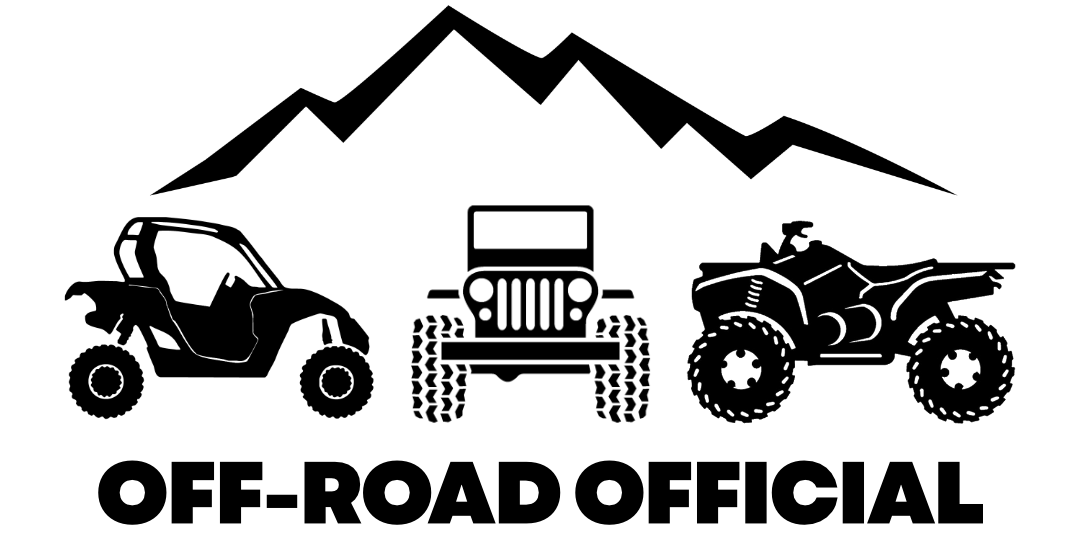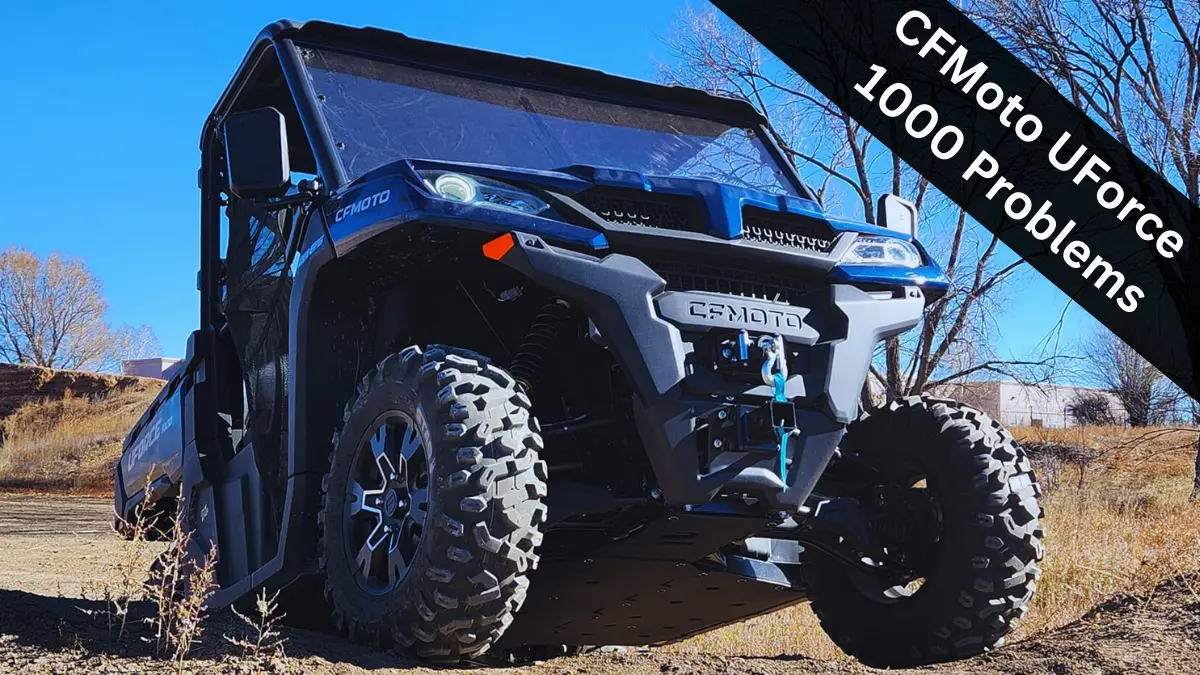The CFMoto UForce 1000 is looked at as one of the best UTV values in the industry among consumers who want a vehicle loaded with power and speed but who don’t want to pay top dollar.
And CFMoto UForce 1000 reviews show that while this model comes pretty close to matching the best of the best in the industry out of the box, throwing a few of the most popular UForce 1000 accessories on will land you with one of the highest-performance UTVs out there.
That said, there are some drawbacks with this model in the form of five common problems that you may run into as an owner.
The five most common UForce 1000 problems are:
- Poor throttle response leading to a jerky ride
- Hard shifting and gears grinding due to the shift linkage
- Inaccurate speedometer and odometer
- Stiff brakes
- Excessive heat in the cab and under the seats
This guide will detail the most common CFMoto UForce 1000 problems, along with proven fixes for each.
Poor Throttle Response Leads To Jerky Ride
By far the most common issue with the CFMoto UForce 1000 is poor throttle response from the gas pedal leading to a very jerky ride.
This issue seems to be a common theme among not only CFMoto’s entire line of UForces, but also among their line of CForce ATVs and ZForce sport sides by sides as well.
Many CFMoto owners report that their machine jerks when first moving forward or backward at a slow speed, with the jerkiness persisting until reaching a speed of 12 to 15 mph.
This jerking can make the UForce 1000 incredibly frustrating to drive if not constantly at a high speed, and makes it almost impossible to drive in rough terrain.
The poor throttle response and subsequent jerkiness are likely the result of a combination of flaws with some components of the UForce 1000, including the Electronic Control Unit (ECU), the clutch, and the spring pressure in the gas pedal.
Electronic Control Unit
The stock ECU in the UForce 1000 is known to cause issues and is the most likely culprit of this poor throttle response.
If your UForce is suffering from jerkiness, you should really look into having an aftermarket company flash and reprogram your vehicle’s stock ECU.
Main Street Cycle is one of these aftermarket companies who offer these services.
They’ve done extensive testing using a DynoJet to map out the ideal settings for the ECU in the CFMoto UForce 1000 by model year.
Owners can send in their stock ECU to be fully tuned with these ideal settings, and then have it shipped back to them.
For 2022 models that already have the switch for both Normal and Work mode, this tuning of the ECU results in a dampened throttle and much smoother ride in Normal mode, while also increasing the horsepower and torque in Work mode for better overall performance.
For 2021 models that don’t already have the switch for Normal and Work mode, this tuning also includes a switch that gives your vehicle these capabilities and offers the same positive results in both modes.
Having the stock ECU tuned will run you around $400 and usually takes one or two weeks, but it will relieve the jerkiness in your machine and give you that smooth ride you envisioned when you bought it.
Clutch
The factory clutch used in the UForce 1000 is also known to cause issues with jerkiness, especially when going forward or in reverse from a stopped position.
This problem is prevalent in other CFMoto models as well, including the CForce 500 and CForce 600.
These issues can usually be alleviated by installing a clutch kit or re-clocking the secondary clutch.
Clutch Kits
Many owners have installed an aftermarket clutch kit, such as those made by RNG Performance, to help alleviate this issue.
These aftermarket clutch kits generally amount to an upgraded spring and weights for the primary clutch and an upgraded helix for the secondary clutch, but will result in a smooth takeoff and ride along with better overall performance.
Reclocking the Secondary Clutch
The secondary clutch contains an adjustable spring. This adjustable spring has multiple different settings that affect the speed and power of the machine, as well as the jerkiness.
There are three different letter settings – A, B, and C, as well as four different number settings – 1, 2, 3, and 4.
The UForce 1000 is factory set at B1, which focuses on top end speed but leaves the ride jerky.
For a less jerky setting, owners should re-clock the clutch to either A1 or C1, with C1 being the most recommended setting to alleviate the jerkiness while also enabling the highest performance in terms of power and speed.
Spring Pressure in Gas Pedal
Another cause of the jerky ride in these machines is the spring pressure in the gas pedal being too light, meaning it takes much less pressure on the gas pedal to send the machine lurching forward than is typical.
This leads to drivers holding their foot up off of the pedal much of the time, which causes foot fatigue and bouncy pedal syndrome.
While much of this issue is resolved by reprogramming the ECU or upgrading the clutch, some owners have resorted to creating their own workaround by way of fashioning a foot rest out of a wooden block or metal plate to fit directly under the gas pedal.
They can then rest part of their foot on this footrest, eliminating the need for it to hover over the pedal.
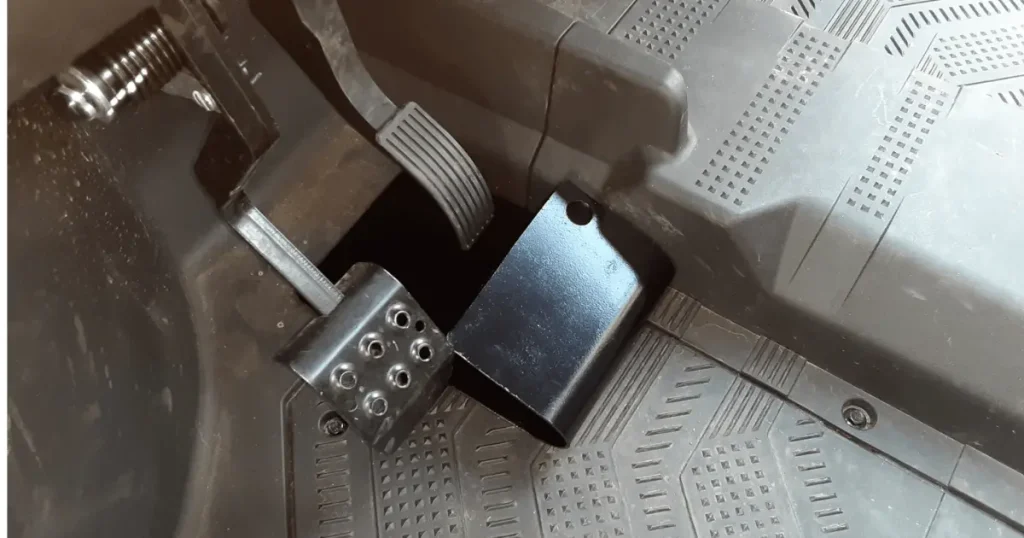
Hard Shifting & Gears Grinding
Another common issue in the CFMoto UForce 1000 is trouble shifting gears.
Many times you’ll find that when going into any gear from a complete stop on an incline, the gear shift will stick to the point that sometimes it’s almost physically impossible to shift it.
Owners also report hearing a grinding noise when attempting to shift gears and the gear indicator light on the display not showing the correct gear the machine is in.
Fix
These are all indicators that the shift linkage needs an adjustment.
The need for an adjustment to the shift linkage usually occurs due to one or both of the lock nuts that hold it in place vibrating loose, resulting in the shift linkage transferring to an incorrect position.
This may also be a result of an improperly set shift linkage during assembly. Either way, the shift linkage needs to be adjusted into the correct position.
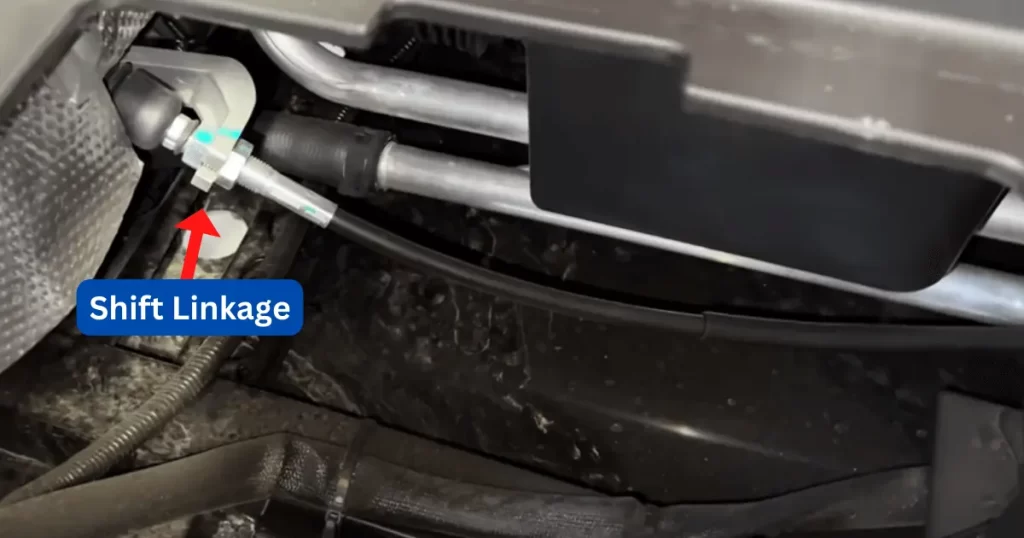
To do this, locate the shift linkage cable under the passenger seat in the middle of the machine.
Loosen the back nut about 1.5 to 2 turns to shift it to the right, and then tighten the front nut to lock it in place.
Inaccurate Speedometer & Odometer
The speedometer and odometer in the UForce 1000 display speed and track mileage based on the circumference of the tires.
The UForce 1000 comes equipped with 27-inch stock tires. As such, the speedometer should display speed based on a circumference of 84.8 inches.
But a common flaw in these vehicles is that they are factory-set with a circumference setting of 100+ inches, which aligns closer to tires of between 31 or 32 inches in size.
This leads to the speedometer inflating the speed of your vehicle, as it is tricked into thinking you are riding on bigger tires than you are.
Not only does this lead to an inaccurate speed reading, but it results in the odometer showing a higher mileage on your vehicle than you’ve actually traveled.
This can negatively affect the resale value of your vehicle and also end your warranty prematurely.
Fix
To fix this, you’ll need to calibrate your speedometer.
You can read more about this issue and how to calibrate your speedometer in this guide to the UForce 1000 Top Speed.
Stiff Brakes
The brakes on the UForce 1000 are often incredibly stiff out of the box, leaving owners needing to exert more than the usual amount of force to properly stop their vehicles.
Fix
Many times this will subside as the brakes wear in, but it may take 100 or more miles of driving before it does.
As this stiffness can often be attributed to air bubbles trapped within the brake fluid reservoir, bleeding the brakes of these potential air bubbles and replacing the brake fluid should resolve the issue much quicker.
Excessive Heat
CFMoto owners reviews reveal that another common issue with the UForce 1000 is heat from the radiator blowing into the cabin and heat from the engine warming the seats to an uncomfortable degree.
The cabin heat occurs due to hot air from the radiator venting in through areas on the dash around the parking brake handle, gear shift, and cubbies.
The heat affecting the seats generates from the motor and blows up from behind and between the seats, but also warms the seats from the underside.
While this problem is common in many other UTV makes and models as well, it can make driving or riding in the UForce 1000 incredibly uncomfortable, especially during summer months.
Fixes
There are a few potential solutions to these heat issues.
Under Seat Fans
Some owners have purchased a small automotive fan and installed it under the seats.
This is said to help reduce much of the heat in the cab area, and should be a simple and inexpensive fix.
Heat Shields
Installing a heat shield seems to be the most effective way to combat the heat in the cabin and under the seats.
There are various heat shields available online that fit under and behind the seats to block the heat. These are said to cut down on the problem by around 75%.
Owners can also save a little coin and rig up a heat shield on their own by installing roofing rubber, or even a windshield sun deflector, under and behind the seats.
These should have much of the same effect.
Remove Doors Or Adjust Windshield
For those with side doors installed, removing these doors during warmer months will help resolve the heat issue.
While this may not be ideal for most owners, it will make a noticeable difference as the added airflow helps to disperse the heat in the cabin area quicker.
And for those with a windshield, riding with it at a cracked or fully open setting should help with air circulation to minimize the heat as well.
Conclusion
While the majority of owners would confirm that the UForce 1000 is every bit the value they hoped to get when they opened their billfold, it’s important to know that there are some drawbacks with this machine.
For more on CFMoto vehicles, check out a review of the line of CForce ATVs before you go.
You can also check out this guide to the CFMoto UForce 1000 vs Can Am Defender to see the fourteen main ways these two similar models differ.
